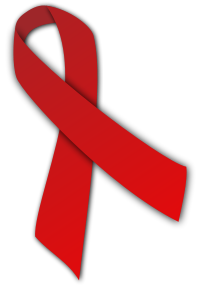
Photo from wikipedia
Background In the Netherlands, echovirus type 6 (E6) is identified through clinical and environmental enterovirus surveillance (CEVS and EEVS). Aim We aimed to identify E6 transmission clusters and to assess… Click to show full abstract
Background In the Netherlands, echovirus type 6 (E6) is identified through clinical and environmental enterovirus surveillance (CEVS and EEVS). Aim We aimed to identify E6 transmission clusters and to assess the role of EEVS in surveillance and early warning of E6. Methods We included all E6 strains from CEVS and EEVS from 2007 through 2016. CEVS samples were from patients with enterovirus illness. EEVS samples came from sewage water at pre-specified sampling points. E6 strains were defined by partial VP1 sequence, month and 4-digit postcode. Phylogenetic E6 clusters were detected using pairwise genetic distances. We identified transmission clusters using a combined pairwise distance in time, place and phylogeny dimensions. Results E6 was identified in 157 of 3,506 CEVS clinical episodes and 92 of 1,067 EEVS samples. Increased E6 circulation was observed in 2009 and from 2014 onwards. Eight phylogenetic clusters were identified; five included both CEVS and EEVS strains. Among these, identification in EEVS did not consistently precede CEVS. One phylogenetic cluster was dominant until 2014, but genetic diversity increased thereafter. Of 14 identified transmission clusters, six included both EEVS and CEVS; in two of them, EEVS identification preceded CEVS identification. Transmission clusters were consistent with phylogenetic clusters, and with previous outbreak reports. Conclusion Algorithms using combined time–place–phylogeny data allowed identification of clusters not detected by any of these variables alone. EEVS identified strains circulating in the population, but EEVS samples did not systematically precede clinical case surveillance, limiting EEVS usefulness for early warning in a context where E6 is endemic.
Journal Title: Eurosurveillance
Year Published: 2018
Link to full text (if available)
Share on Social Media: Sign Up to like & get
recommendations!